Introduction
The culinary world is a tapestry of flavors, textures, and traditions, with each region contributing its unique gem. Among these, Cabbage Heart with Bean Worms stands as a testament to the ingenuity of Chinese home cooks, who have long transformed humble ingredients into extraordinary meals. This dish, rooted in the agricultural heartlands of eastern China, pairs the delicate sweetness of cabbage hearts with the rich, earthy umami of bean worms—a protein-packed delicacy revered for its tender texture and nutritional value. While the name might sound unusual to those unfamiliar with traditional Chinese cuisine, this recipe is a harmonious blend of simplicity and sophistication, offering a gateway to exploring the depths of regional flavors.
In this comprehensive guide, we will delve into the history, preparation, and cooking techniques required to master Cabbage Heart with Bean Worms. From selecting the freshest ingredients to achieving the perfect balance of flavors, this article will equip both novice and seasoned cooks with the knowledge to recreate this dish authentically. Whether you seek to impress dinner guests or reconnect with cultural heritage, this recipe promises a culinary adventure like no other.
The Origins of Cabbage Heart with Bean Worms
To appreciate this dish fully, one must first understand its cultural context. Cabbage Heart with Bean Worms originates from Jiangsu and Shandong provinces, regions where agriculture has thrived for millennia. Farmers, seeking sustainable ways to utilize every part of their harvest, developed recipes that celebrated seasonal produce and local proteins. Bean worms, the larvae of certain bean-eating moths, were historically considered a peasant food but gradually gained recognition as a gourmet ingredient due to their meaty texture and high protein content.
The cabbage heart, or the innermost leaves of the Chinese cabbage (Napa cabbage), was prized for its tender, crisp texture and mild sweetness. When combined with bean worms, the result is a dish that is both nourishing and deeply satisfying. Today, it is often served at banquets and family gatherings, symbolizing abundance and the harmony between land and season.
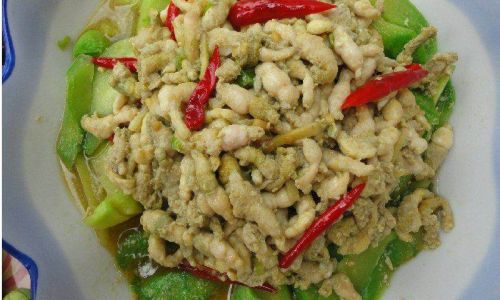
Ingredients: Quality Matters
The success of this dish hinges on selecting the finest ingredients. Here’s a breakdown of what you’ll need:
- Cabbage Heart (300g): Choose a firm, compact cabbage with vibrant green outer leaves. The heart should feel heavy for its size, indicating moisture retention.
- Bean Worms (200g): Fresh or frozen bean worms are acceptable. If using frozen, thaw them thoroughly and pat dry to prevent excess moisture.
- Aromatics:
- Garlic (4 cloves, minced)
- Ginger (1-inch piece, grated)
- Scallions (2 stalks, sliced diagonally)
- Sauces and Seasonings:
- Light soy sauce (1 tbsp)
- Oyster sauce (1 tsp)
- Shaoxing wine (1 tbsp)
- Sesame oil (½ tsp)
- White pepper (¼ tsp)
- Stock: Chicken or vegetable broth (½ cup)
- Cooking Oil: Peanut or vegetable oil (2 tbsp)
- Cornstarch Slurry: 1 tsp cornstarch mixed with 1 tbsp water (for thickening)
Preparation: The Foundation of Flavor
Before igniting the stove, meticulous preparation ensures each ingredient contributes its best to the final dish.
Cleaning the Bean Worms:
Bean worms require gentle handling to preserve their texture. If using fresh worms:
- Rinse them under cold water to remove any debris.
- Blanch in boiling water for 1–2 minutes to eliminate impurities.
- Drain and pat dry with paper towels.
For frozen worms:
- Thaw in the refrigerator overnight.
- Squeeze gently to remove excess liquid.
Preparing the Cabbage Heart:
- Trim the base of the cabbage and discard any wilted outer leaves.
- Halve the cabbage lengthwise, then slice the heart into 1-inch strips.
- Soak in cold water for 10 minutes to crisp the leaves, then drain thoroughly.
Mise en Place:
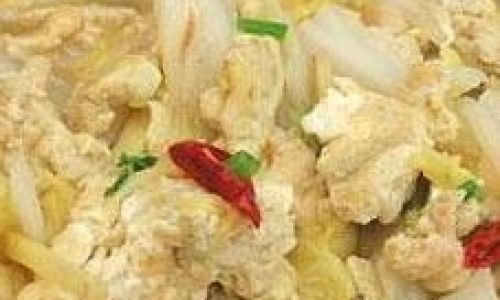
- Mince garlic and ginger finely.
- Slice scallions, separating the white and green parts.
- Measure all sauces and seasonings in advance to streamline cooking.
Cooking Technique: A Symphony of Heat and Flavor
The cooking process for Cabbage Heart with Bean Worms is divided into three stages: searing, simmering, and finishing. Each step builds layers of flavor, resulting in a dish that is both aromatic and deeply satisfying.
Searing the Bean Worms:
- Heat a wok or large skillet over high heat until smoking.
- Add 1 tbsp of oil and swirl to coat the pan.
- Add the bean worms and sear undisturbed for 2 minutes to develop a golden crust.
- Stir-fry for an additional minute, then transfer to a plate.
Pro Tip: Searing locks in the bean worms’ natural juices, preventing them from becoming rubbery.
Sautéing Aromatics:
- Reduce the heat to medium and add the remaining oil.
- Toss in the white parts of the scallions, garlic, and ginger.
- Sauté until fragrant (30–45 seconds), taking care not to burn the garlic.
Cooking the Cabbage:
- Increase the heat to high and add the cabbage strips.
- Stir-fry vigorously for 2–3 minutes until the leaves wilt slightly but retain their crunch.
- Deglaze the pan with Shaoxing wine, scraping up any browned bits.
Simmering and Seasoning:

- Return the bean worms to the pan and pour in the stock.
- Add soy sauce, oyster sauce, and white pepper.
- Bring to a gentle simmer, cover, and cook for 5 minutes to meld flavors.
Finishing Touches:
- Uncover and stir in the cornstarch slurry to thicken the sauce.
- Drizzle with sesame oil and toss in the green scallion slices.
- Cook for 1 final minute to allow the scallions to wilt.
Plating and Presentation
The visual appeal of a dish is as important as its taste. Transfer the Cabbage Heart with Bean Worms to a shallow serving bowl, ensuring the vibrant green cabbage and golden bean worms are visible. Garnish with a sprinkle of toasted sesame seeds or a drizzle of chili oil for those who crave heat. Serve immediately with steamed jasmine rice or hand-pulled noodles to soak up the savory sauce.
Variations and Substitutions
While tradition calls for specific ingredients, modern cooks may adapt the recipe based on availability or dietary preferences:
- Vegetarian Adaptation: Substitute bean worms with sliced king oyster mushrooms or tofu for a plant-based twist.
- Spicy Kick: Introduce dried chili flakes or fresh bird’s eye chilies during the aromatics stage.
- Gluten-Free Option: Use tamari instead of soy sauce and ensure your oyster sauce is certified gluten-free.
The Science Behind the Flavors
Understanding the culinary chemistry at play can elevate your cooking. The Maillard reaction, which occurs during searing, creates complex flavors by caramelizing the bean worms’ natural sugars. Meanwhile, the cabbage’s mild sweetness is enhanced by the gentle simmering process, which breaks down its cell walls and releases subtle sugars. The combination of soy sauce and oyster sauce provides glutamic acid, the compound responsible for umami, while Shaoxing wine adds a layer of aromatic complexity.
Troubleshooting Common Issues
Even seasoned cooks encounter hiccups. Here’s how to address them:
- Mushy Cabbage: Overcooking is the culprit. Ensure the cabbage is only lightly wilted during stir-frying.
- Tough Bean Worms: Avoid overcrowding the pan when searing, as this lowers the temperature and leads to steaming instead of searing.
- Bland Flavor: Increase the soy sauce or oyster sauce by ½ tsp increments, tasting as you go.
Cultural Significance and Modern Revival
In an era of globalized cuisine, Cabbage Heart with Bean Worms is experiencing a resurgence. Chefs and food enthusiasts are rediscovering its rustic charm, pairing it with contemporary plating techniques and fusion twists. However, purists argue that the dish’s soul lies in its simplicity—a reminder that true gastronomic pleasure need not be elaborate.
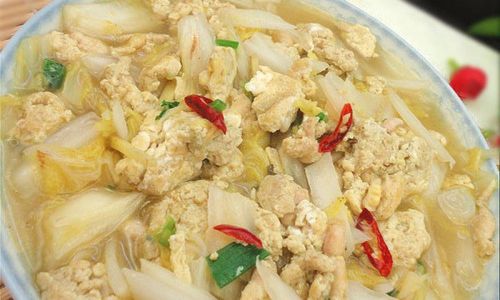
Health Benefits: Nutrition Meets Nourishment
Beyond its culinary appeal, this dish is a nutritional powerhouse. Cabbage hearts are rich in fiber, vitamins C and K, and antioxidants, while bean worms offer a complete protein profile, including essential amino acids. Together, they form a low-calorie, high-nutrient meal that supports digestive health, immunity, and muscle repair.
Conclusion: A Dish Worth Savoring
Cabbage Heart with Bean Worms is more than a recipe—it’s a journey through China’s culinary heritage. By mastering its preparation, you honor the ingenuity of generations past while creating a meal that delights the senses. Whether enjoyed as a humble family dinner or showcased at a dinner party, this dish invites diners to savor the beauty of simplicity. So, gather your ingredients, fire up the wok, and let the symphony of flavors begin. Your taste buds—and your cultural curiosity—will thank you.

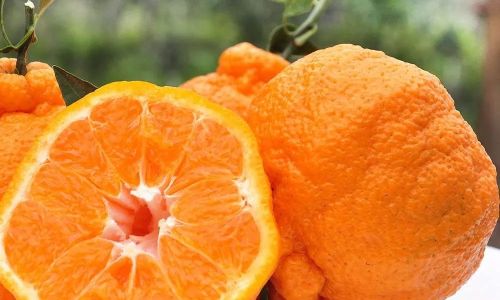
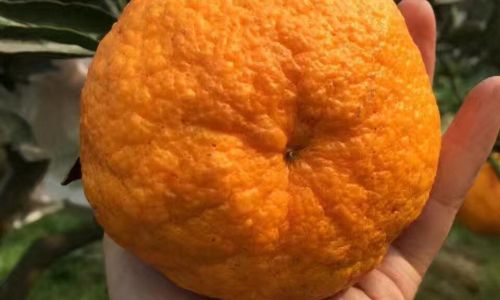
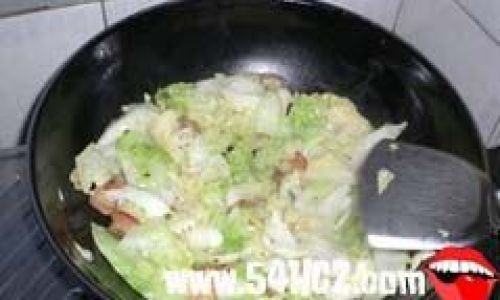
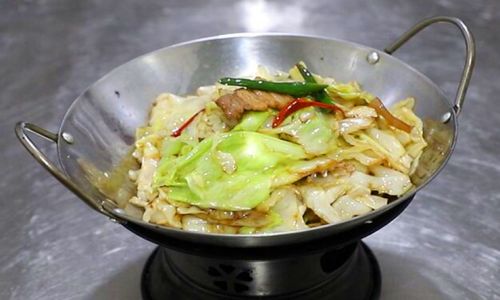

0 comments